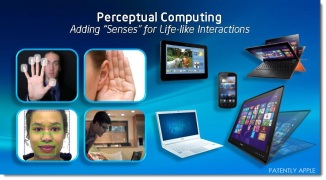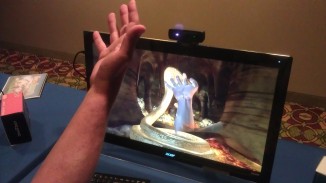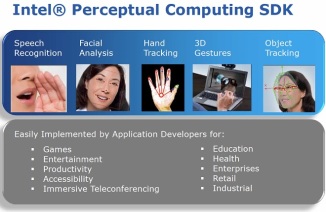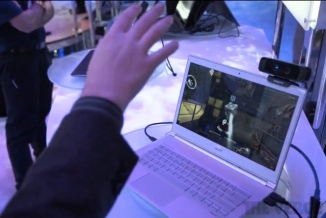The first true touchscreen was unveiled in 1974, and the resistive touchscreen was patented in 1977 and is still used today (although capacitive touchscreens have taken over now). It’s been close to four decades, don’t you think it’s time for an upgrade? First it was Leap Motion that caused a stir in the industry, but it didn’t rise to expected levels. Now, Intel has joined the league, and when Intel plays the game, they dominate. Perceptual computing—the next big wave of technology—is about to hit, bringing with it the promise of very engaging computing experiences.
Perceptual Computing (PerC) is an organization within Intel Corporation which focuses on next-generation, natural user interfaces such as touch, gesture, voice, emotion sensing, biometrics, and image recognition. The organization is funded by a $100 million grant from Intel Capital. Intel have provided developers with their own Intel Perceptual Computing SDK. Developers are now working to make computers as cognitive about their surroundings as we are so they can process much of the information around them and arrive at a logical conclusion based on a user’s intent. Extracting information from the environment will include data points such as the directionality of the voice (for example, is the user talking to the computer or to a friend nearby?), the ambient background noise, facial recognition for automatic user selection (and security), 3D maps of the environment for object and gesture recognition, and more.
Intel had demonstrated how it would work. Cameras sensed the position of fingers, and spun virtual lightning between them. A user’s hands could be used to tickle a virtual child. And in another demo, Eden played the game Portal 2 by waving his hands and orally commanding the computer to drop a Companion Cube. Finally, Eden demonstrated a new version of the Nuance virtual assistant, co-developed by Intel and Nuance and running on top of Intel’s Atom and Core silicon.
Intel has been the biggest player in terms of technology and innovation in the industry. Whether this will be the future of computing, we will find out. Soon.



